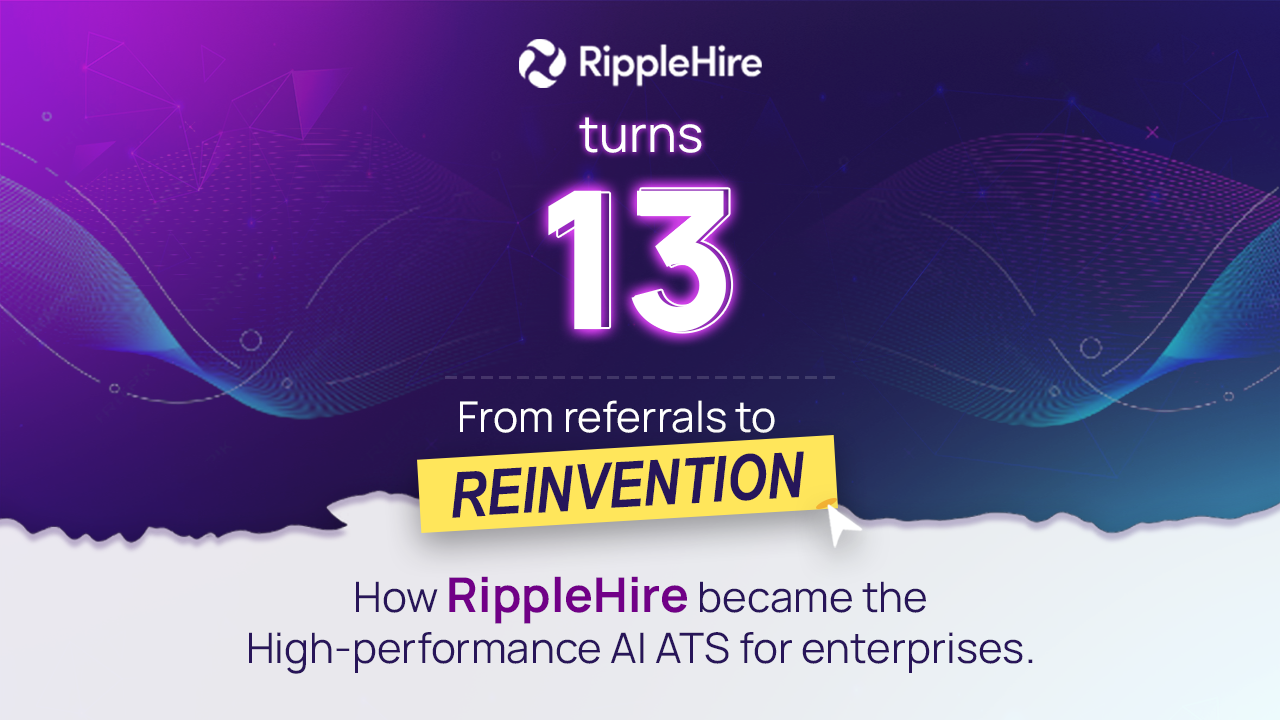3 Elements That Move Your Referral Program from Good to Great
Let’s face it—employee referrals are still one of the strongest channels to hire quality talent.
Candidates who come through referrals tend to join faster, ramp up quicker, and stay longer. But that’s only if your referral program works the way it’s supposed to.
Most programs start with good intentions. A job is posted. Employees are asked to refer. A few responses trickle in. And then the energy fades.
If you’ve ever run a referral campaign that spiked for a week and then went quiet, you’re not alone.
The truth is, running a referral program is harder than it looks. And the real challenge is consistency. How do you create a program that delivers a steady stream of high-quality candidates—not just during campaigns, but year-round?
Let’s break that down.
Why Most Referral Programs Stall
At its core, talent acquisition is an outbound function. Recruiters are trained to search externally, pitch hard-to-fill roles, and chase the right candidates.
But referral hiring flips that on its head. You’re asking employees to voluntarily market jobs to their networks. That takes a different playbook.
It’s not about running campaigns. It’s about building an engine.
And for that, there are three levers that separate the good from the great.
1. Discipline: Drive Trust Through Process
Employees will only refer if they trust the process. And that trust is built through discipline.
Discipline doesn’t mean rigidity. It means consistency.
-
Consistently share high-priority roles with employees
-
Communicate job openings clearly and in one place
-
Run weekly or fortnightly referral nudges—not once in a blue moon
Most companies share roles through mailers or job boards. But when employees can’t find the right role or don’t get timely updates, they lose interest fast.
Your recruitment team needs to treat referrals with the same rigor as external sourcing. That starts with making the process visible, timely, and repeatable.
2. Responsiveness: Feedback is Your Currency
You may earn trust through discipline. But you keep it with responsiveness.
If an employee takes the time to refer a candidate, they expect acknowledgment. Silence kills momentum.
-
Acknowledge every referral
-
Share progress updates wherever possible
-
Even a “not moving forward” note is better than no note at all
Responsiveness doesn’t mean real-time replies. It means predictable communication. When people feel heard, they stay engaged. When they don’t, they stop participating.
3. Ownership: Appoint a CEO of Referrals
Referral programs often fail because no one truly owns them.
It becomes a shared responsibility, scattered across recruiters, HRBPs, and TA ops. But without a single point of ownership, it’s hard to drive outcomes.
Appoint someone to lead the channel. Their role isn’t just to run campaigns—it’s to:
-
Align referral goals with business hiring priorities
-
Track program health and KPIs
-
Act as the liaison between recruiters and employees
-
Push for improvements in process, design, and messaging
Call them the “CEO of Referrals” if you like. What matters is that they have visibility, accountability, and the tools to drive success.
How RippleHire Enables High-Trust Referral Hiring
Most legacy ATS platforms aren’t built for employees. They were designed for recruiters—not for people who want to refer a friend in under two minutes.
RippleHire changes that.
Our high-performance ATS doesn’t just enable referral workflows. It makes them frictionless and sustainable. From job discovery to referral tracking to employee nudges—we help you turn good intentions into great results.
With RippleHire, you get:
-
Weekly referral campaigns sent automatically
-
Personalized job feeds for each employee
-
One-click referrals with resume parsing
-
Real-time referral status updates
-
Structured ownership dashboards for program leads
All while integrating into your broader hiring engine—whether it's direct sourcing, talent marketing, or campus programs.
Final Thoughts from Author
Most people think referral programs are about payouts. They’re not.
They’re about trust, clarity, and consistency. When employees feel looped in, respected, and supported—they participate. When the process breaks, interest disappears.
Discipline, responsiveness, and ownership are simple ideas. But if you implement them well, they can transform your referral channel.
And if your current systems aren’t built for this? Maybe it’s time to explore one that is.
[See how RippleHire powers high-trust referral hiring]
FAQs
Why do most referral programs fail to scale?
Because they rely on one-time campaigns, lack feedback loops, and aren’t built into the recruiter’s day-to-day rhythm.
What’s the biggest reason employees stop referring?
Lack of feedback. When they don’t hear back after sharing a profile, trust erodes.
How can I improve my current program without new tools?
Start with discipline—share roles consistently. Then improve responsiveness and assign a clear owner for the channel.
What role does an ATS play in referral hiring?
A high-performance ATS like RippleHire reduces friction, personalizes communication, and brings transparency for both employees and recruiters.
Can RippleHire support both referrals and other sourcing channels?
Absolutely. RippleHire is built to manage all sourcing channels—referrals, job boards, internal mobility, and more—from one unified platform.
Updated July 2025















